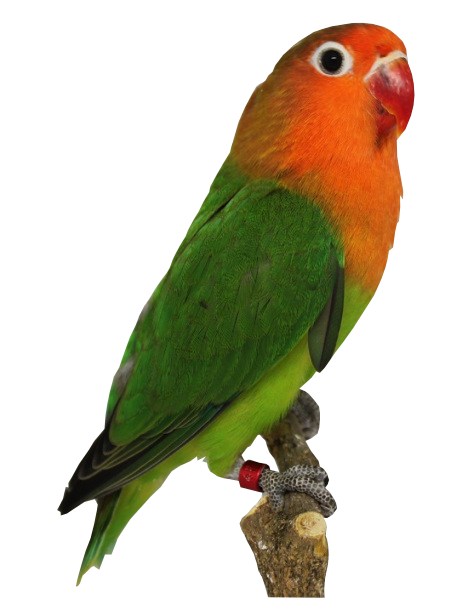Agapornis fischeri or Fischer’s lovebird
Agapornis fischeri Agapornis fischeri, commonly known as Fischer´s lovebird, is a small parrot originating from a small region in east-central Africa. It is known for being a very sociable bird that forms close ties to its

Agapornis fischeri
Agapornis fischeri, commonly known as Fischer´s lovebird, is a small parrot originating from a small region in east-central Africa. It is known for being a very sociable bird that forms close ties to its owner. If you are planning to keep A. fischeri in your home, it is useful to know as much as possible about this bird.
A. fischeri is named after its discoverer, the German explorer Gustav Fischer who reported his first sighting in the early 1800s. It is classified as a member of the family Psittaculidae.
What are the characteristics of Agapornis fischeri?
Fischer’s lovebird is on average between 14 to 15 centimeters long. Its weight ranges from 44 to 60 grams, therefore, it is not a very large bird.
Both males and females have the same coloration, there being no sexual dimorphism, which means that they do not have visible differences.
Females tend to be larger than males, although this is not always the case. The big difference is in the bones of the female pelvis which are always farther apart.
Agapornis fischeri is a multicolored bird. Its wings, chest and back are predominantly covered by an intense green plumage. Its neck feathers are yellow while those of its forehead are dark orange. Its beak is bright red and the plumage at the top of its head is olive green. Its tail feathers are violet or in some cases blue, while its eyes are black.
This exhibition of colour does not end here since several colour variations have been bred, such as Lutino and Blue mutation. Lutino being predominantly orange and yellow in colour while Blu mutation is blue with a greyish neck and head.
Behavior of Agapornis fischeri
It is important to know that Fischer’s lovebirds are dependent and sociable, this means that they love living with other specimens of the same species. They can also be very sociable and affectionate with other animals and people, particularly with people who treat and care for them well. Agapornis are usually friendly and can be exceedingly curious in some cases.
Agapornis fischeri love to fly and therefore need a cage with ample space as small cages with limited space can stress them. In addition, they need an area inside the cage where they can bathe constantly as they like to be fresh. Agapornis are excellent at learning to repeat sounds if they are exposed to them frequently enough.
Most of the time they are cheerful, happy and playful. When they are sick it can easily be noticed from their mood. When they are angry they tend to scream, move their wings vigorously and peck. However, Fischer’s lovebirds won’t cause problems, we can be sure of this.
How should Agapornis fischeri be fed?
There is not much to worry about in this respect, as Fischer’s lovebirds are not delicate when it comes to food. They require the same as other species of Psittaculidae.
Fischer’s lovebirds need a wide variety of fruits and seeds so that they get all the nutrients they require to stay strong and healthy. In the wild A. fischeri is considered a pest by some farmers as flocks can quickly cause damage to corn and millet crops.
In captivity they can be fed a wide variety of foods including sunflower seeds, millet, apple, banana, carrot and other fruits and vegetables. Their diet can be quite inexpensive. That’s usually the way it is with this type of bird.
Reproduction of Agapornis fischeri
Reproduction is another of the issues of great importance to Fischer’s lovebird and their reproductive habits are well known by breeders. Their breeding season has two distinct periods during the year, the first occurring from January to April, and the second being shorter, from June to July.
To be able to reproduce properly, birds usually nest in a hole in a tree that is situated between 3 to 15 meters above ground. The female usually lays between 4 to 8 white eggs and the incubation period is 23 days. Subsequently, there is a period of 38 days in which the chicks are fed in the nest by the parents. After one month the chicks are almost fully feathered and may be able to make their first flights.
How long do Agapornis Fischeri live?
Like all animal species, it has its average life span. In the wild if an A. fischeri bird has access to a balanced diet and avoids predators it can live up to 10 years. This age can easily be reached by well kept birds in captivity.
How much does an Agapornis fischeri cost?
If you have decided to keep an Agapornis fischeri you must take into account that not only do you need to buy the bird but that you will also have to invest in a series of products for the bird to have an excellent quality of life.
Generally, the price of Agapornis varies depending on the pet store or Agapornis breeder, but is somewhere between 25 to 50 euros. The country or region where you want to buy it will also affect its price.


